Key Takeaways
- Even low-level background noise can disrupt concentration and memory over time.
- Emotional signs of noise overload include irritability, fatigue, lack of focus, and avoidance behaviours.
- You can reclaim peace at home by setting up quiet zones, using noise-masking tools, or wearing earplugs.
- Mental strategies such as mindfulness, breathing exercises, and cognitive reframing help reduce emotional reactivity.
- Digital overstimulation contributes to sensory overload—setting boundaries can restore calm.
Why Urban Noise is More Than Just Annoying
It lurks. And just as I wake up, it attacks. Today, it was the barking of two dogs who were fighting for supremacy. They are both locked in yards across the street from one another. Yesterday, it was a car honk that low-key sounded like a slur. What would it be tomorrow? The noise. Whatever it is, I’ll hear it.
The relentless soundtrack of urban living is getting louder. Ask the World Health Organization, and they will tell you that over 100 million people in Europe suffer harmful levels of environmental noise. That is like the population of Germany AND the Netherlands combined. Add to that 30 million more from the American CDC statistics, and imagine the tension, poor sleep, reduced focus, and rising stress that people live with.
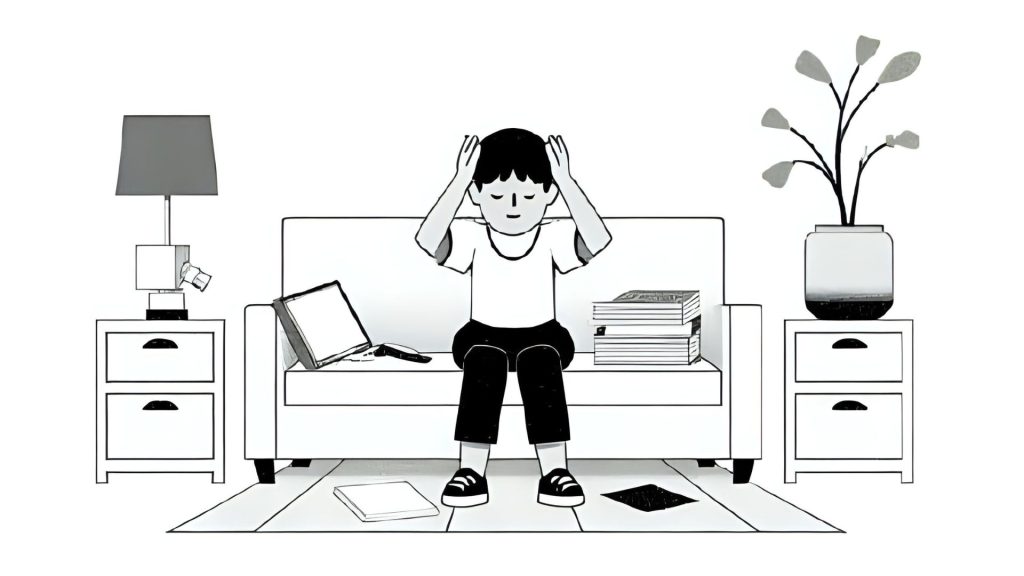
I am talking about chronic noise exposure, particularly in cities. For me, it started just as a nuisance. Something I can brush off and ignore. Yeah… It’s not going my way. I’m looking for ways to cope. I also figured that my troubles with noise are not unique or special. The least I could do is share what I know about managing the emotional effects of noise, both by physical and mental means.
How Does Sound Affect the Brain? Poorly…
Can’t we just pick berries, sit around campfires, and grunt for communication, like the good old days? No, because who else will hear the delights of urban environments – jackhammers, sirens, construction, traffic, and air-conditioning hums?
Interestingly enough, when we are exposed to constant noise, it is not just the brain that is affected. The body reacts to it as well. Sometimes I feel like all tense, like I have stepped into a boss arena. But there is no health bar at the bottom. All while I fold clothes or do some other household chore. This is the physical reaction I’m talking about. What I’m getting is anxiety. All because of the “slight nuisance” that is everyday noise.
Many of us, I’m sure, are needlessly tense and on alert with no real danger to speak of. Noise builds up, and eventually it triggers our fight-or-flight response. During which we release cortisol, the hormone of stress. With that comes higher blood pressure, trouble sleeping, ultimately leading to insomnia, fatigue, and cognitive overload. Nasty stuff.
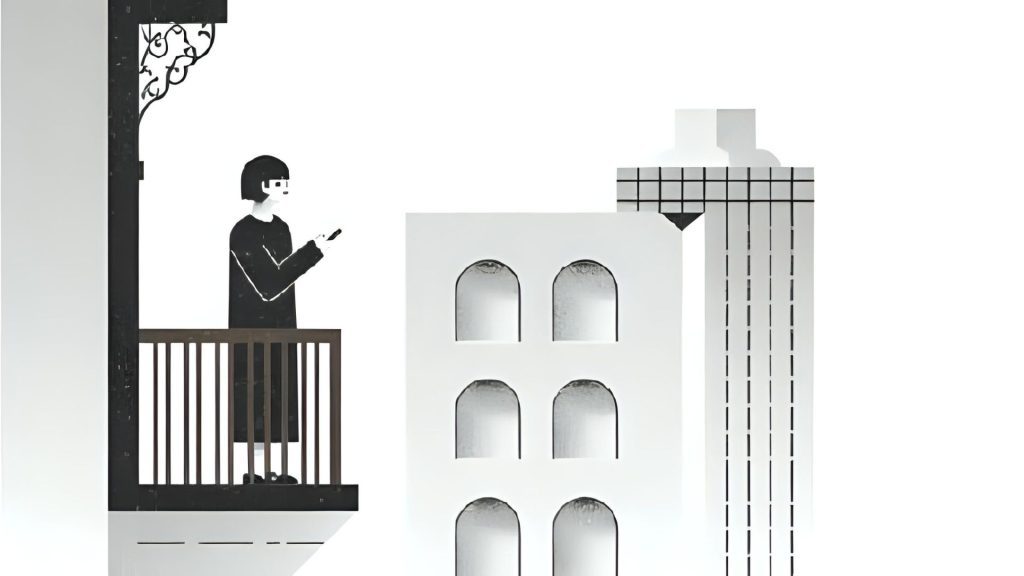
Even relatively low levels of chronic background noise, under 50 dB, can interrupt deep sleep or reduce focus over long periods. The effect is cumulative, as all bad things are.
It’s difficult to assess how sensitive my nervous system is. I only have my own perspective. But I do get anxiety and mental fog in mundane situations. At least I’m not a child. Constant noise can affect the development of their brains, slowing down the learning process. And with noise, concentration is out the window.
This constant stress we are all feeling to some extent increases the risk of burnout. Today I don’t like my colleagues, tomorrow – my friends, or my hobbies seem dull, or I’m angry at my spouse for something.
No. This might be the front-end story my mind presents me with, but in truth, at the back-end, it’s the effects of an ongoing burnout.
Can Noise Pollution Cause Emotional Fallout
Can a fish swim? I’ve seen some lazy carp, but usually yes. When we think of the dangers of noise, we often imagine it as standing in front of a booming speaker or using heavy machinery with no ear gear. The volume, the power. Thinking about noise soon brings up the image of your eardrums popping.
But noise is a creeper. It doesn’t need to be loud. It can make even a rational person irritable and exhausted with no apparent reason.
The lack of concentration is another way I notice that there has been too much noise around me. When folding a t-shirt feels like folding a fitted sheet – that’s when I know I have fatigue.
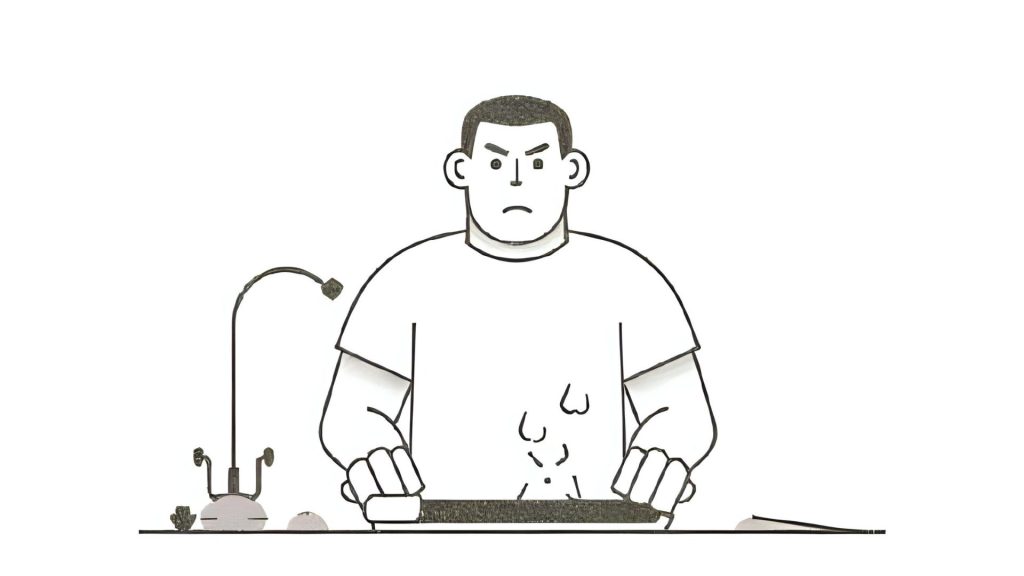
Yesterday I insulted a spoon, because it splashed water when I was washing it. A spoon!? But stress can make a person emotionally reactive enough to lose their balance. This heightened impatience is another giveaway that the nervous system is running on fumes.
Do you know what avoidance behaviours are? It’s when you don’t want to engage with something because of the discomfort it would bring. Like not inviting people over or skipping gatherings because you are on edge and can’t stand the idea of more exhaustion.
What Are Some Emotional Coping Strategies That Actually Work
Once you’ve allowed yourself to experience your emotions, the next step is to label your emoions and identify how you are feeling. This can make your emotions seem more managable.
– Matthew T. Tull; Psychologist
How to Reclaim Control of Your Environment
A solution to the ongoing everyday noise that I explored is to create quiet zones in my home. I have designed my place with the idea to get back the control I need to feel safe and relaxed.
For my setup, I used an old thick rug that I had lying around (pun intended), curtains, and I already had bookshelves, but I bought a couple of soft pillows to passively absorb sound.
A different approach is to use noise masking. Everything that can produce a pleasant white noise would do. That could be white noise machines, fans, or 10-hour-long videos of giraffes eating the top of the crown leaves. Anything that can drown out the sporadic city sounds.
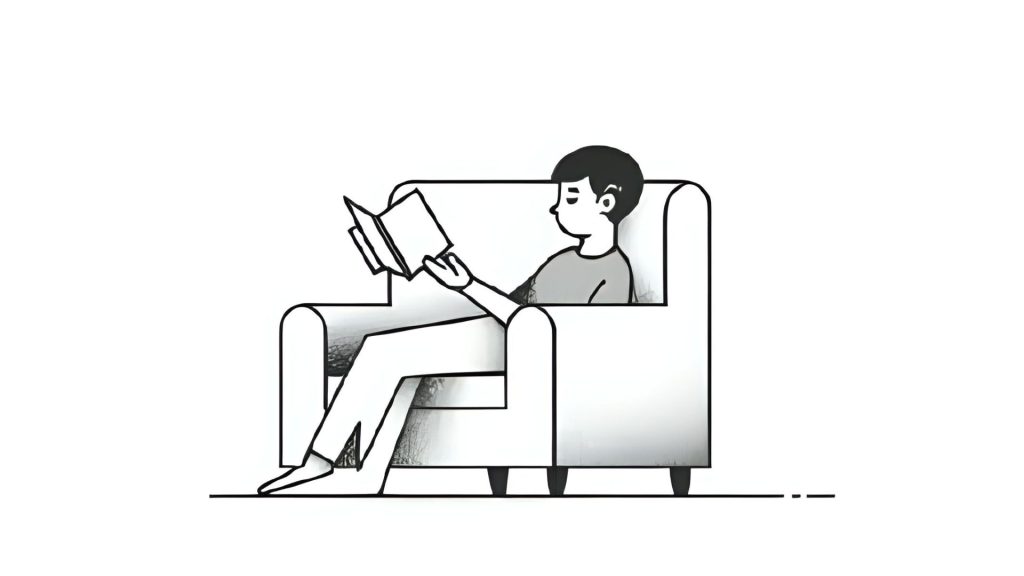
And if you are thinking, “how can adding more noise resolve a noise issue?”, the trick is that pleasant white noise gives the brain something predictable to hold on to, and better ignore the sharp and surprising urban noise.
One can always swallow the small discomfort of having earplugs and combat the noise issue that way. Normal in-ear Bluetooth headphones might work, but there are also specially engineered earplugs that keep the clarity of sound while also lowering the perceived dB significantly. People usually buy such gear for loud environments like a concert or a party.
Is Mental Gymnastics a Reasonable Approach to Noise
Once upon a time, on a very hot summer morning, I was woken up by birds chirping in front of my open window. The noise coming from them disturbed my sleep. Aren’t bird songs supposed to foster relaxation and comfort? I took a couple of deep breaths and tried to imagine that I was relaxing in a forest after a long hike or something like that. From being irritated at birds, to humbly enjoying their melodies – it’s all a matter of perspective shift.

Did I fall back asleep? No. But it got me thinking about how if I change my reaction to a situation, the situation changes.
Not to sound like a Buddhist monk, but mindfulness techniques do work. I try to observe without immediate reaction, so I don’t react or fight every sound I hear. Rather than that, just notice it without labeling it as bad.
There is an app for everything, and that includes guided meditations and mindfulness. They can help you have better control of your emotions and be more present, so mental stress does not build up that fast.
The deep breaths I took were not just for dramatic effect on that hot summer morning. Breathing exercises are another powerful tool to help you calm down and reset. Even a couple of slow, deep breaths can stimulate the parasympathetic nervous system. This little buddy of ours is responsible for the opposite of the fight-or-flight response – the much chiller cousin, rest-and-digest. Yes, really. This system allows us to shift from tension to restoration.
The mind is like water. When it’s turbulent, it’s difficult to see. When it’s calm, everything becomes clear.
– Alan Watts; British philosopher
And the trick I used to imagine myself in a forest after a hike? Kids call it imagination, but scientists have given it the name of cognitive reframing. It’s a technique that allows us to reinterpret a seemingly “threatening” noise as simply a “bothersome” one. This new perspective allows the brain to remain calm and emotionally balanced.
How to Set Up Daily Boundaries For Digital Hygiene
Noise is not the only villain that can take away your peace and quiet. Researching topics, planning meetings with friends, following meme accounts on social media… I have been responsible for overstimulating myself so many times. I know what would happen, and I still do it. Well, less and less I want to believe (shout-out to Fox Mulder), but digital clutter can disturb our emotional resilience.
Here is what I do. I try to avoid overstimulation by limiting screen time, especially before bed. Notifications and news are muted at around 8 pm. But I struggle to create screen breaks during the day because my work and some of my hobbies are on the screen.
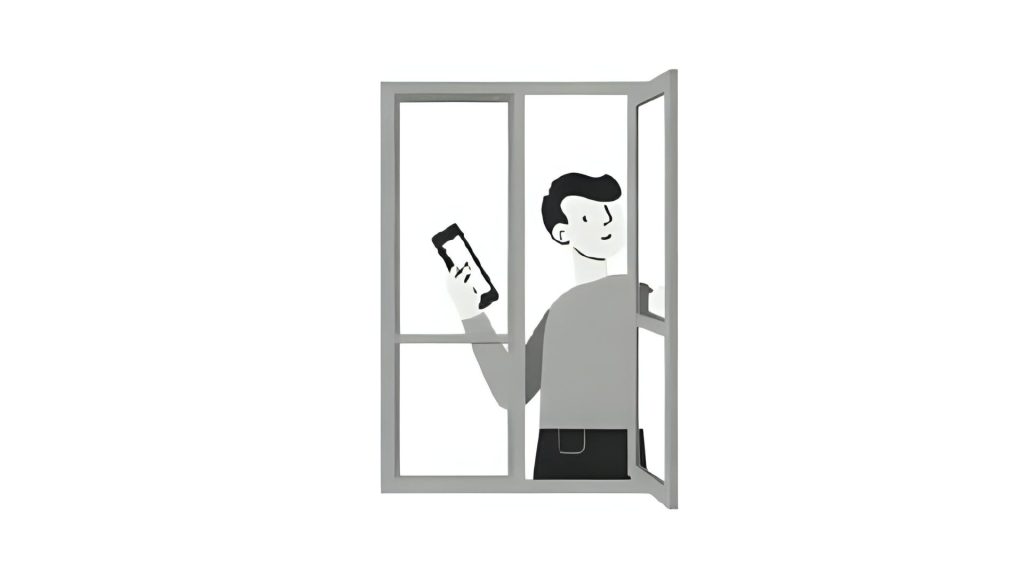
Generally, introducing a noise-free period in your daily routine can lower stress levels. For some, it’s the slow, silent mornings, or quiet hours before sleep, or even soundless lunch breaks with no devices. If the food on your plate has gone cold because you can’t find the right video to eat it to, then we both are as guilty as charged.
These quiet intervals allow the nervous system to down-regulate, supporting recovery from constant exposure. Stress is like a drug, and sometimes we don’t know that we are addicted to it. Going for a walk with earbuds or falling asleep to a podcast can seem like relaxing things to do, but they add more wood to the overstimulation pyre.
Mindfulness achieved. Now I want something physical
I can only ignore or limit the attention I give to noise, stress, and anxiety so much. Sounds familiar? Mental techniques and tools can be greatly empowered when combined with physical changes to your environment.
Noise can get to us in a huge variety of ways. It can leak just like water from cracks on the wall, holes, or windows that don’t close tightly. It can be amplified by flat, hard surfaces. Noise can make other noise louder because of the way the sound waves’ amplitudes combine.
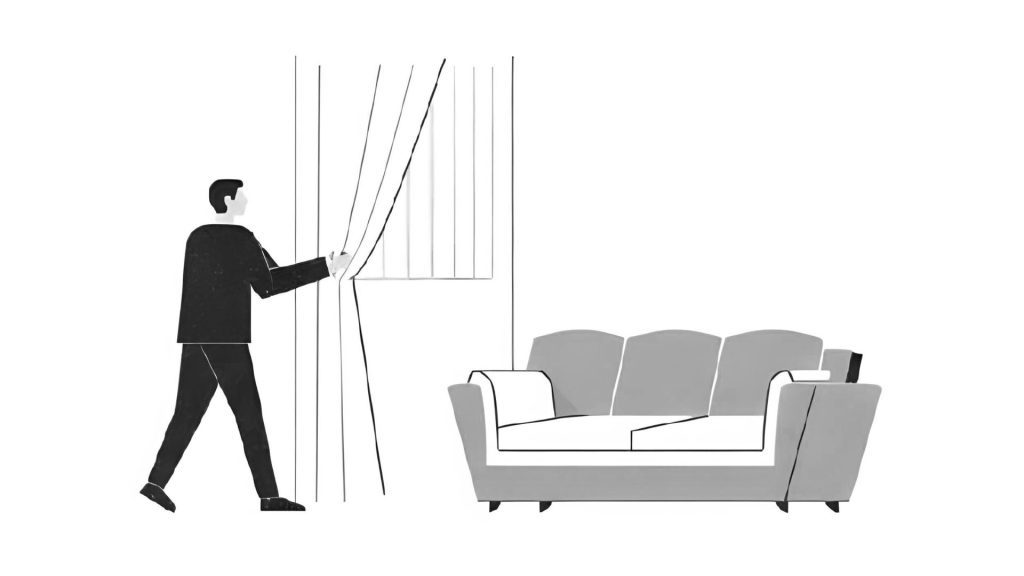
There are physical ways to combat noise without having to do full renovations.
How to Rearrange Your Living Space
Interiors can have noise-dampening qualities; we just need to make the right choices. Sound-absorbing curtains are a start. They are usually best buddies with sealed windows. Together, they can stop outside noise like traffic, construction, and street sounds.
Bookshelves, like the one I have, make excellent sound barriers. They scatter the sound waves before they reach you. A bit awkward to say, but they do need to be filled with books. For even more impact, put additional insulation or padding materials at the back of the shelf.
Having more soft furniture in a room, especially if placed next to a noisy wall, would help with sound absorption. Sofas, beds, headboards, bean bags, a big stuffed polar bear toy – whatever fits your style.
Our homes should be temples of relaxation and recovery. My home, my castle, and all that. I, for one, don’t live in a mansion, but if your place allows it, keep your distance from the source of the noise. That could mean to avoid a shared wall, or the face of the building that is closest to a busy street.
Getting into home acoustics, one panel at a time
The last trick up my sleeve would be to recommend full-scale renovations. That is the most effective and most expensive way to go. But don’t go rushing to feel powerless. There are a lot of accessible options for acoustic treatment for a home.
Start by sealing gaps. Not just the one in your resume, but small openings around windows, doors, and skirting boards. They are common culprits for letting sound in. Use weatherstripping, acoustic sealant, or door sweeps to close these off. Even a simple draft blocker at the bottom of the door can make a difference in blocking hallway noise or street-level sounds.
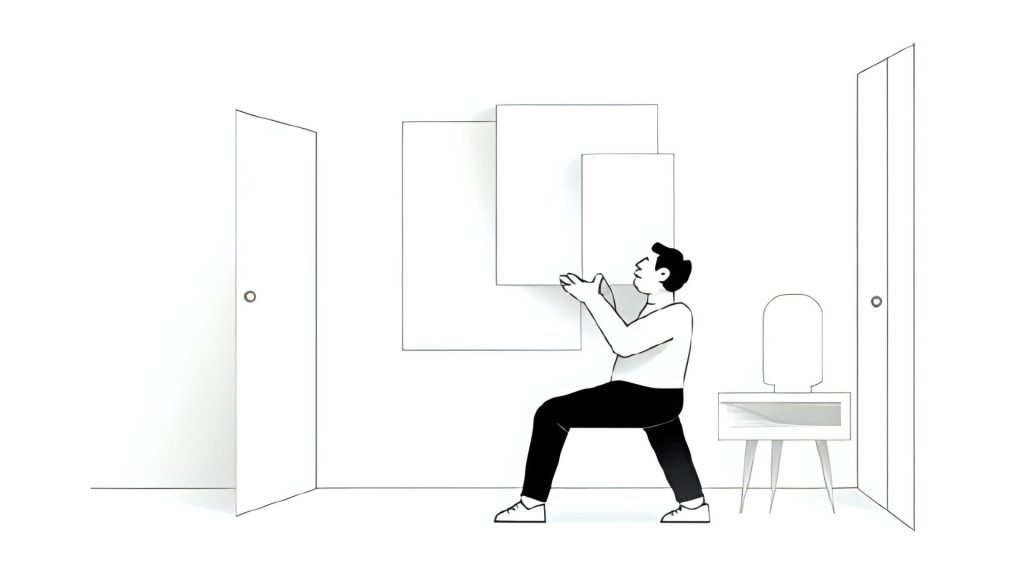
The next step is to consider placing acoustic panels on key surfaces that reflect the most sound. Usually, that would be walls right in front of the source of the noise, as they are the first to get hit by the sound wave.
On the market, multiple companies sell acoustic panels like GIK Acoustics and their SpotPanel 50 mm or the WAVO panels of DECIBEL. There are many more. These panels combine wood, fabric, PET felt and different geometries to influence how sound behaves in a room. More often than not, modern panels are created to be aesthetically pleasing and highly adaptable to the style of different interiors.
Panels can be glued or mounted to the walls pretty easily, and most sellers offer free-standing panels or screens that can be positioned and moved freely in an apartment. This is useful for people who rent and can’t (or won’t, let’s be real) do renovations.
Do you know what TL;DR stands for? Too Loud; Didn’t Relax. Or something like that… the explanation was too long and I didn’t have the time to read it. We, the city people, deserve to have the quiet to recuperate and unwind. And noise is not going away, unless we do something about it. The sooner we realise that it accumulates and leads to negative effects on health, the better.

Leave a Reply